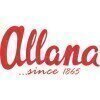Filter interviews by
Restaurant Associates Interview Questions and Answers
Be the first one to contribute and help others!
Interview questions from similar companies

Security Officer Interview Questions & Answers
Mondelez Internationalposted on 12 Jan 2025
I was interviewed in Dec 2024.
The interview process for a Security Officer position can vary depending on the company and the specific role. However, here’s a general outline of what you can expect:
### 1. Application and Resume Screening
**Initial Review:** HR or the hiring manager will review your resume to ensure you meet the basic qualifications and experience required for the role.
### 2. Phone Interview
**Preliminary Screening:** A brief phone interview to discuss your background, experience, and interest in the position. This may include questions about your availability and salary expectations.
### 3. In-Person or Video Interview
**First Round:**
- **Behavioral Questions:** Expect questions about your previous experiences, challenges faced, and how you handled specific situations.
- **Technical Questions:** Questions related to security protocols, procedures, and technologies.
- **Scenario-Based Questions:** Hypothetical scenarios to assess your problem-solving skills and decision-making abilities.
### 4. Practical Assessment
**Skills Test:** You may be asked to complete a practical assessment, such as identifying security vulnerabilities in a simulated environment or demonstrating your ability to handle a security incident.
### 5. Background Check
**Verification:** The company will conduct a background check to verify your credentials, criminal record, and employment history.
### 6. Final Interview
**Discussion with Higher Management:** A final interview with senior management or the head of security to discuss your fit for the role and the organization’s culture.
### 7. Offer and Onboarding
**Job Offer:** If selected, you will receive a job offer detailing the terms and conditions of employment.
**Onboarding:** Once you accept the offer, the onboarding process begins, which includes training on the company’s security policies and procedures.
Would you like to dive deeper into any specific stage of the interview process? 😊
Interview Preparation Tips
### 1. Application and Resume Screening
**Initial Review:** HR or the hiring manager will review your resume to ensure you meet the basic qualifications and experience required for the role.
### 2. Phone Interview
**Preliminary Screening:** A brief phone interview to discuss your background, experience, and interest in the position. This may include questions about your availability and salary expectations.
### 3. In-Person or Video Interview
**First Round:**
- **Behavioral Questions:** Expect questions about your previous experiences, challenges faced, and how you handled specific situations.
- **Technical Questions:** Questions related to security protocols, procedures, and technologies.
- **Scenario-Based Questions:** Hypothetical scenarios to assess your problem-solving skills and decision-making abilities.
### 4. Practical Assessment
**Skills Test:** You may be asked to complete a practical assessment, such as identifying security vulnerabilities in a simulated environment or demonstrating your ability to handle a security incident.
### 5. Background Check
**Verification:** The company will conduct a background check to verify your credentials, criminal record, and employment history.
### 6. Final Interview
**Discussion with Higher Management:** A final interview with senior management or the head of security to discuss your fit for the role and the organization’s culture.
### 7. Offer and Onboarding
**Job Offer:** If selected, you will receive a job offer detailing the terms and conditions of employment.
**Onboarding:** Once you accept the offer, the onboarding process begins, which includes training on the company’s security policies and procedures.
Would you like to dive deeper into any specific stage of the interview process? 😊

Operations and Supply Chain Intern Interview Questions & Answers
Kraft Heinz Companyposted on 4 Dec 2024
I applied via Campus Placement and was interviewed in Nov 2024. There were 3 interview rounds.
The test was easy containing 30 questions in 30 minutes. 10 questions for english skills, 10 for logical reasoning and 10 for quantitative aptitude.
My GD topic was 'Is AI actually taking up jobs?'. there was 15 minutes time and each person got a chance to speak. 2 of us got shortlisted from a group of 10 for further round.
(4 Questions)
- Q1. Tell me about yourself
- Q2. Explain supply chain
- Q3. What are your skills and what kind of work atmosphere makes you happy?
- Q4. Are you well versed with excel?
Interview Preparation Tips

(3 Questions)
- Q1. Why you want to leave current organisation?
- Ans.
Seeking new challenges and growth opportunities in a different work environment.
Desire for career advancement
Seeking new challenges and learning opportunities
Looking for a better work-life balance
Interested in exploring different industry or company culture
- Q2. How would you deal with unionise workforce conflict
- Ans.
I would address unionized workforce conflicts by promoting open communication, listening to concerns, finding common ground, and seeking solutions together.
Promote open communication between management and union representatives
Listen to concerns and grievances from both sides
Find common ground and areas of agreement to build upon
Seek solutions together through negotiation and compromise
Implement conflict resolution str
- Q3. What steps would you take to address productivity loss due to personal conflicts among team members?
- Ans.
Addressing productivity loss due to personal conflicts among team members involves open communication, conflict resolution strategies, team building activities, and setting clear expectations.
Encourage open communication among team members to address conflicts early on
Implement conflict resolution strategies such as mediation or team building exercises
Set clear expectations for behavior and performance to prevent futur...
Interview Preparation Tips

process or packing operator Interview Questions & Answers
McCain Foodsposted on 22 Oct 2024
I was interviewed in Sep 2024.
(5 Questions)
- Q1. About knowledge of equipments?
- Q2. Leadership, attitude, your behaviour ?
- Q3. Your family baground, company related questions??
- Q4. What is McCain??
- Q5. Past company related questions?

Production Graduate Engineer Trainee Interview Questions & Answers
Perfetti Van Melleposted on 10 Jan 2025
Normal apti questions
(2 Questions)
- Q1. Asking questins from resume
- Q2. Technical core subject questions

I applied via Walk-in and was interviewed in Oct 2024. There was 1 interview round.
(3 Questions)
- Q1. When started work
- Ans.
I started working in 2010 after completing my degree in Business Administration.
Started working in 2010 after graduating
Began my career in sales at XYZ Company
Have been in the sales field for over 10 years
- Q2. I am waiting this opportunity
- Q3. No more question this company
Interview Preparation Tips

Basic aptitude test
Practice maths sums
(2 Questions)
- Q1. Dsa question of easy level
- Q2. Tell me more about yourself

I applied via campus placement at Dr. B.R. Ambedkar National Institute of Technology (NIT), Jalandhar and was interviewed in Sep 2024. There were 3 interview rounds.
Case Study given Related to Industrial Problems and how to tackle with them.
(2 Questions)
- Q1. On which principle boiling point works.
- Ans.
Boiling point is based on the principle of equilibrium between liquid and vapor phases.
Boiling point is the temperature at which the vapor pressure of a liquid equals the external pressure.
Higher external pressure leads to a higher boiling point, while lower pressure leads to a lower boiling point.
Boiling point is affected by factors like intermolecular forces, molecular weight, and atmospheric pressure.
For example, wa...
- Q2. On which principle refrigerator works.
- Ans.
Refrigerators work on the principle of removing heat from the interior to lower the temperature.
Refrigerators use a refrigerant to absorb heat from the interior and release it outside.
The refrigerant evaporates at low pressure and absorbs heat, then condenses at high pressure to release heat.
The cycle of evaporation and condensation allows the refrigerator to maintain a cool temperature inside.
Examples of refrigerants ...
(2 Questions)
- Q1. What was work of your in our industry?
- Q2. How do you contribute in our industry?
- Ans.
I contribute to the industry by staying updated on the latest trends, actively participating in industry events, and continuously seeking opportunities for growth and improvement.
Staying updated on industry trends and advancements
Actively participating in industry events and conferences
Seeking opportunities for growth and improvement through continuous learning and skill development
Interview Preparation Tips

Field Sales Officer Interview Questions & Answers
The Hershey Companyposted on 23 Sep 2024
I applied via Campus Placement
(2 Questions)
- Q1. HR please job requirement
- Q2. I have been working in Harshit company for some time now, I have a great desire for it
(2 Questions)
- Q1. I am lab technician
- Q2. I am microbiology hematology and others and I am lab technician and DMLT course and I am a student
Interview Preparation Tips

(10 Questions)
- Q1. Tell me about yourself?
- Q2. Previous company experience?
- Q3. What is fermentation
- Ans.
Fermentation is a metabolic process that converts sugars into acids, gases, or alcohol using microorganisms like yeast or bacteria.
Fermentation is a anaerobic process, meaning it occurs without the presence of oxygen
Common examples include the fermentation of sugars to produce alcohol in beer, wine, and spirits
Yeast is a common microorganism used in fermentation to produce bread, beer, and wine
Lactic acid fermentation ...
- Q4. Difference between Aerobic and Anaerobic fermentation
- Ans.
Aerobic fermentation requires oxygen, while anaerobic fermentation does not.
Aerobic fermentation produces more ATP than anaerobic fermentation.
Anaerobic fermentation is used in the production of alcohol, while aerobic fermentation is used in the production of vinegar.
Aerobic fermentation is more efficient in terms of energy production.
Anaerobic fermentation can occur in the absence of oxygen, such as in muscle cells du
- Q5. Fat percentage of Tonned, skimmed and full cream milk?
- Ans.
Toned milk has around 3% fat, skimmed milk has less than 0.5% fat, and full cream milk has around 6-8% fat.
Toned milk typically has around 3% fat content.
Skimmed milk has less than 0.5% fat content.
Full cream milk usually contains around 6-8% fat.
Fat percentage can vary slightly based on the brand and processing methods.
- Q6. Which bacteria responsible for milk spoilage?
- Ans.
The bacteria responsible for milk spoilage include psychrotrophic bacteria, coliform bacteria, and lactic acid bacteria.
Psychrotrophic bacteria can grow at refrigeration temperatures and are commonly found in raw milk.
Coliform bacteria, such as Escherichia coli, can indicate poor hygiene during milk production.
Lactic acid bacteria can produce off-flavors and cause milk to sour.
- Q7. Pasteurisation temperature of milk?
- Ans.
Pasteurisation temperature of milk is typically around 72°C for 15 seconds.
Pasteurisation is a process of heating food to a specific temperature for a set amount of time to kill harmful bacteria.
The standard pasteurisation temperature for milk is around 72°C (161.6°F) for 15 seconds.
This process helps to extend the shelf life of milk and make it safer for consumption.
- Q8. Biological Food hazards?
- Ans.
Biological food hazards are risks to food safety caused by living organisms such as bacteria, viruses, parasites, and fungi.
Biological food hazards can lead to foodborne illnesses and outbreaks.
Common biological hazards include Salmonella, E. coli, Listeria, and Norovirus.
Proper food handling, storage, and cooking practices are essential to prevent biological food hazards.
Regular cleaning and sanitation of food prepara...
- Q9. What is HACCP ?
- Ans.
HACCP stands for Hazard Analysis and Critical Control Points, a systematic preventive approach to food safety.
HACCP is a management system in which food safety is addressed through the analysis and control of biological, chemical, and physical hazards from raw material production, procurement and handling, to manufacturing, distribution and consumption of the finished product.
It involves identifying potential hazards i...
- Q10. FSSAI FULL FORM?
- Ans.
Food Safety and Standards Authority of India
FSSAI is a government body responsible for ensuring food safety and regulating the food industry in India
It sets standards for food products and ensures their quality and safety
FSSAI issues licenses to food businesses to ensure compliance with regulations
Example: FSSAI registration is mandatory for all food businesses in India
Interview Preparation Tips
Thank you
Tell us how to improve this page.
Interview Questions for Popular Designations
Interview Questions from Similar Companies

Cargill

Mondelez International

Perfetti Van Melle

General Mills
- Home >
- Interviews >
- Restaurant Associates Interview Questions







